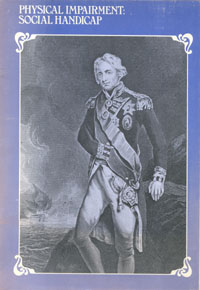Sign up to our newsletter Subscribe
Analysing Global Immunisation Expenditure

Britain’s one and a half million physically handicapped people do not form a homogeneous group. It is wrong to regard them as a discrete section of the population with identical difficulties and interests; for just as the basic abilities, learnt skills and other…
Britain’s one and a half million physically handicapped people do not form a homogeneous group. It is wrong to regard them as a discrete section of the population with identical difficulties and interests; for just as the basic abilities, learnt skills and other personal characteristics of ‘normal’ people vary very widely so too do those of persons who happen to have a disabling condition. In addition, someone who suffers the painful limitations imposed by, for example, rheumatoid arthritis may need help very different from that required by individuals with epilepsy, multiple sclerosis, chronic bronchitis, a spinal injury, blindness1 or a combination of such afflictions. And factors such as the age at which an individual is affected, the duration of his or her condition, whether or not it remains stable, improves or becomes progressively worse and whether or not family and or other community support is available are all critical determinants of the personal experience of a given impairment in day to day life.
Yet consciousness of wide variations in the causes and consequences of physical defects or limitations should not obscure the fact that most of the people who suffer them share some common disadvantages. Awareness of this point has grown significantly during the last decade, partly as a result of the increasing realisation that handicap may be seen as a social state which may arise from but is different in nature from the specific impairments or disabilities that a person may suffer. Restricted mobility, loss of income (often coupled with increased basic living costs) and the over protective or other prejudices of able-bodied members of the population are all examples of phenomena which frequently tend to deny disabled people a personally satisfactory place in the community around them.
Traditional disease orientated approaches to understanding disability have often failed to reveal these universal aspects of physical handicap, a shortcoming which this paper attempts to remedy by offering an integrated picture of both its medical and its social characteristics. It describes the measurement, causes and where it is possible the prevention of impairment and handicap and also analyses the structure and organisational problems of the services available for the assistance and rehabilitation of disabled people, the total cost of which was around £3,000 million in 1976-77.
One of the main objectives of this study is to highlight the change? in the pattern of physical impairment in Britain during the twentieth century and to indicate how increases in disability related to chronic, degenerative illnesses of middle and later life have created new demands on the NHS and allied agencies, particularly at the primary care level. The resulting tensions may be eased through a full understanding of the separate, although complementary, contributions of medicine and social support to the wellbeing of disabled people and a positive definition of the role of family doctors and other professionals in providing relevant services.
Physical Impairment: Social Handicap
